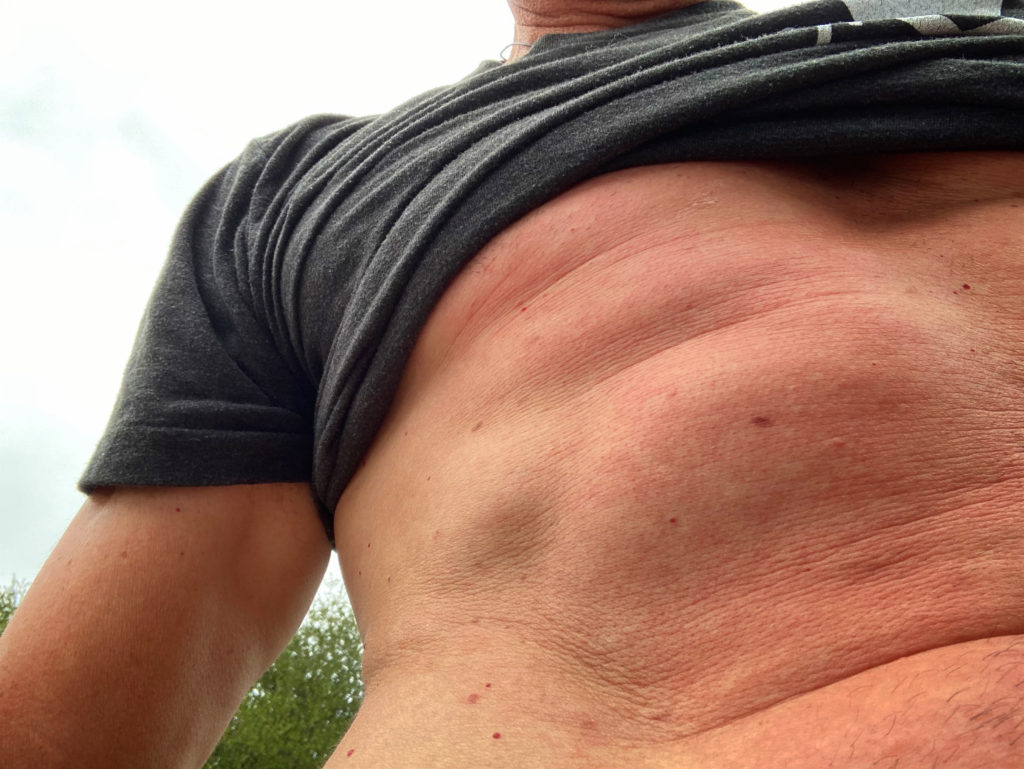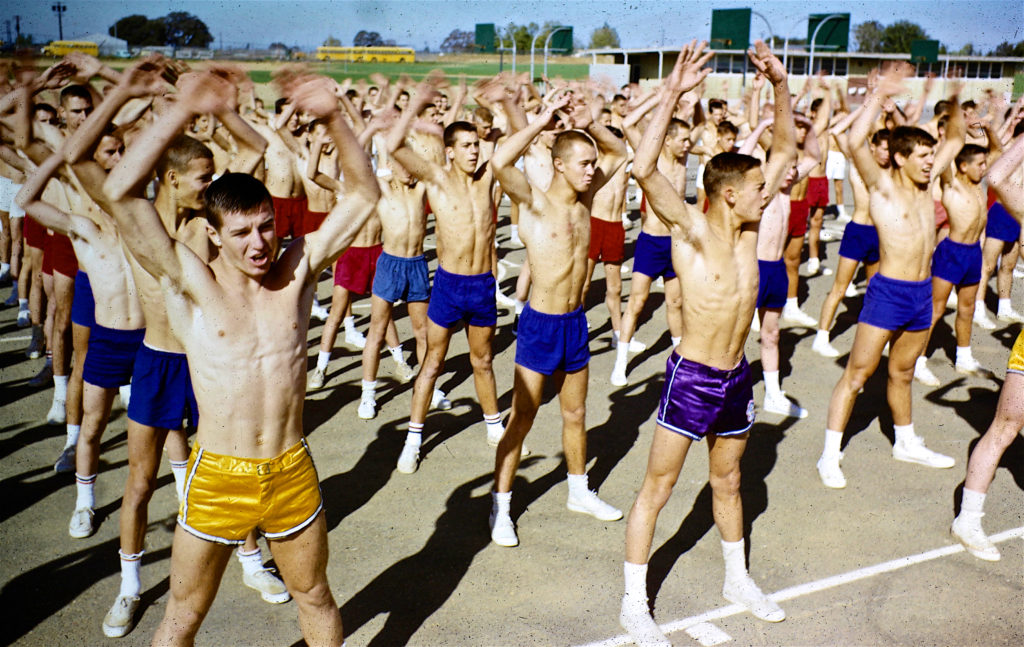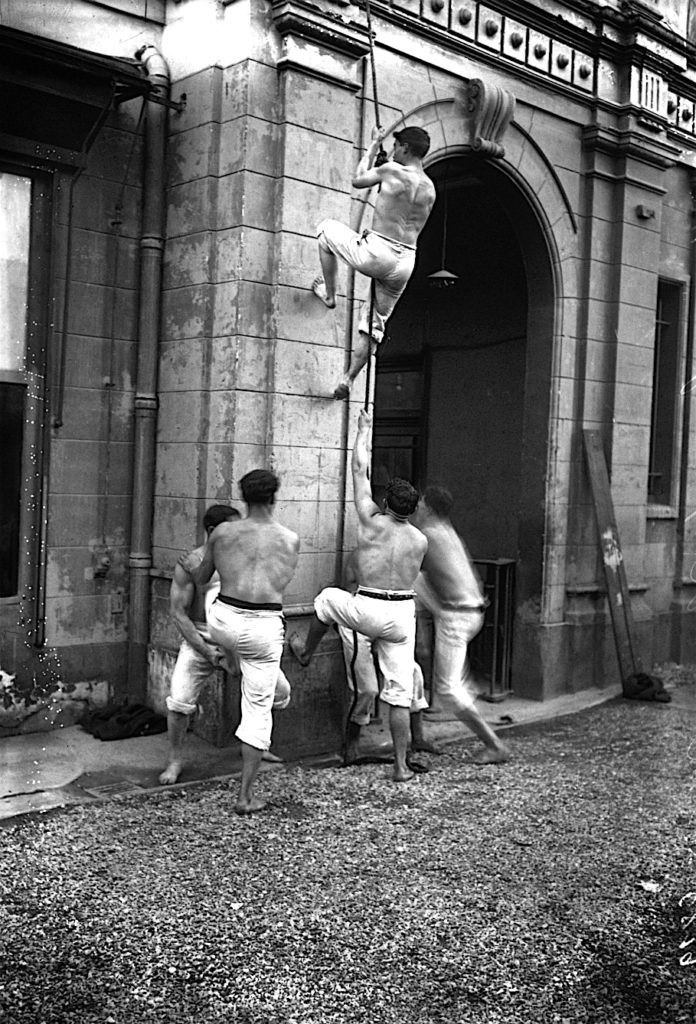
I went running today in the cold rain without a shirt. As I put on my shirt above, I thought it would make a good share on the history of training in “uncomfortable” weather–on purpose.
I had to laugh at myself on the way back because my skin looked like a bright red lobster getting pulled out of the pot due to the skin’s reaction to the cold. I was the only person on the trail without shirt because I was likely the only person on the trail who understood classical PE and the history and importance of training in various weather conditions.
In the history of physical education, training in the outdoors with minimal clothing fell under the area of physical hygiene. When we think of hygiene today, we think of bleach wipes, killing germs, and handwashing, but in the classical PE era of pre-1920, hygiene took on an expanded dimension. Georges’ Hebert of France and his “Natural Method” emphasized such hygiene conditioning too. If you want to learn more about Hebert and this kind of training, see references below to my good friend Philippe Til who translated the original French physical training manuals of Hebert into the English language.
In another historic PE example, although more modern, the famous LaSierra High PE program in Carmichael, CA during the 1960s often saw the boys training without their shirts and in gym shorts only–in hot dry and wet weather at times. The story of LaSierra PE was featured in “The Motivation Factor” documentary film by Doug Orchard and myself acting as the film’s Executive Producer and PE Historian.

There are a couple of main points under the classical idea of hygiene I need to make. First, fresh air. Second, acclimating to weather conditions.
Ventilation was often quite poor at the turn of the century and especially during the industrial revolution with crowded tenement housing and factories. This was also the era of the 1918 Influenza Pandemic, so there was a lot of attention on fresh air and not breathing recycled and contaminated air supplies. Schools during this era also had ventilation problems. In fact, there was a movement during this era for “outdoor classrooms” in the fresh air and sunlight. As I prepared my elementary PE students in March 2020 to leave for an extended spring break due to COVID-19, one of my primary recommendations to them was to go outside in the fresh air and sunlight every single day. Why? Because it’s healthy and proven by history to be important for mind, body, and spirit.
My second point on classical hygiene training today is weather acclimatization. To “acclimate” means to get used to something–in our example, it’s getting used to weather conditions. I exercise in all kinds of weather, and I often run in the summer during the hottest periods of the day as in over 110 degrees Fahrenheit. In the winter, I will often run in the cold and also in the rain–sometimes in a downpour too. Why? To get used to it. Why? Survival.
Many humans today, and especially Americans, have become “soft” and feeble to extremes of weather. We have weakened in our climate-controlled environments that never let it get too cold or too hot. It’s nonsense and makes for a weak person. It’s also dangerous from a survival standpoint. That’s right–I said “not” exercising in extreme weather is dangerous–not the other way around.
Southern California where I live is basically an irrigated desert. If you cannot tolerate heat here, you are at an extreme disadvantage if you ever get stuck outside in the weather or are required to spend time under exertional stress conditions. It’s not a good strategy. I often made this point to my PE kids and helped them in age-appropriate ways to process heat and cold. Why? It was good for them and their health and increased their survival skill set. I was shocked how “weather weak” today’s children have become…not good.
While I live close to Disneyland, life is not Disneyland. It’s extreme and can be uncomfortable at times–or even viscious. Training in hot, cold, wet, dry, light, dark, clear visability, fog, etc. can really help build your health and mindset for survival instead of being the victim.
Get uncomfortable once in a while. You’ll figure it out–and be stronger for it too. 🙂
References:
- “The Natural Method” of Georges Hebert (Translated by Philippe Til)
- Hebert’s Natural Method Videos (Philippe Til & Ron Jones)
- “The Motivation Factor” Film on LaSierra High PE (Doug Orchard Films & Ron Jones)
–Ron Jones, MS, Historical Kinesiologist, Physical & Health Educator

